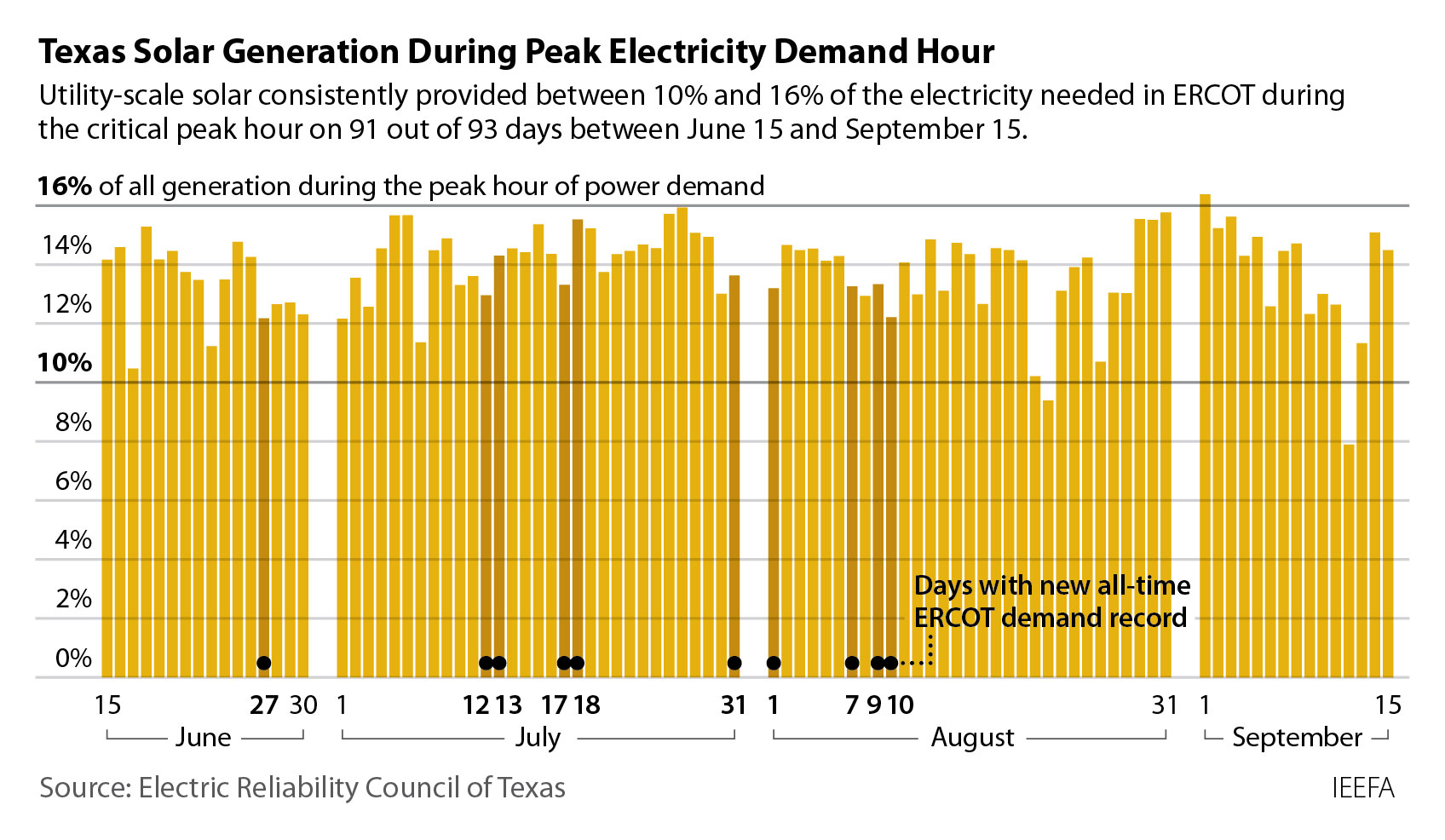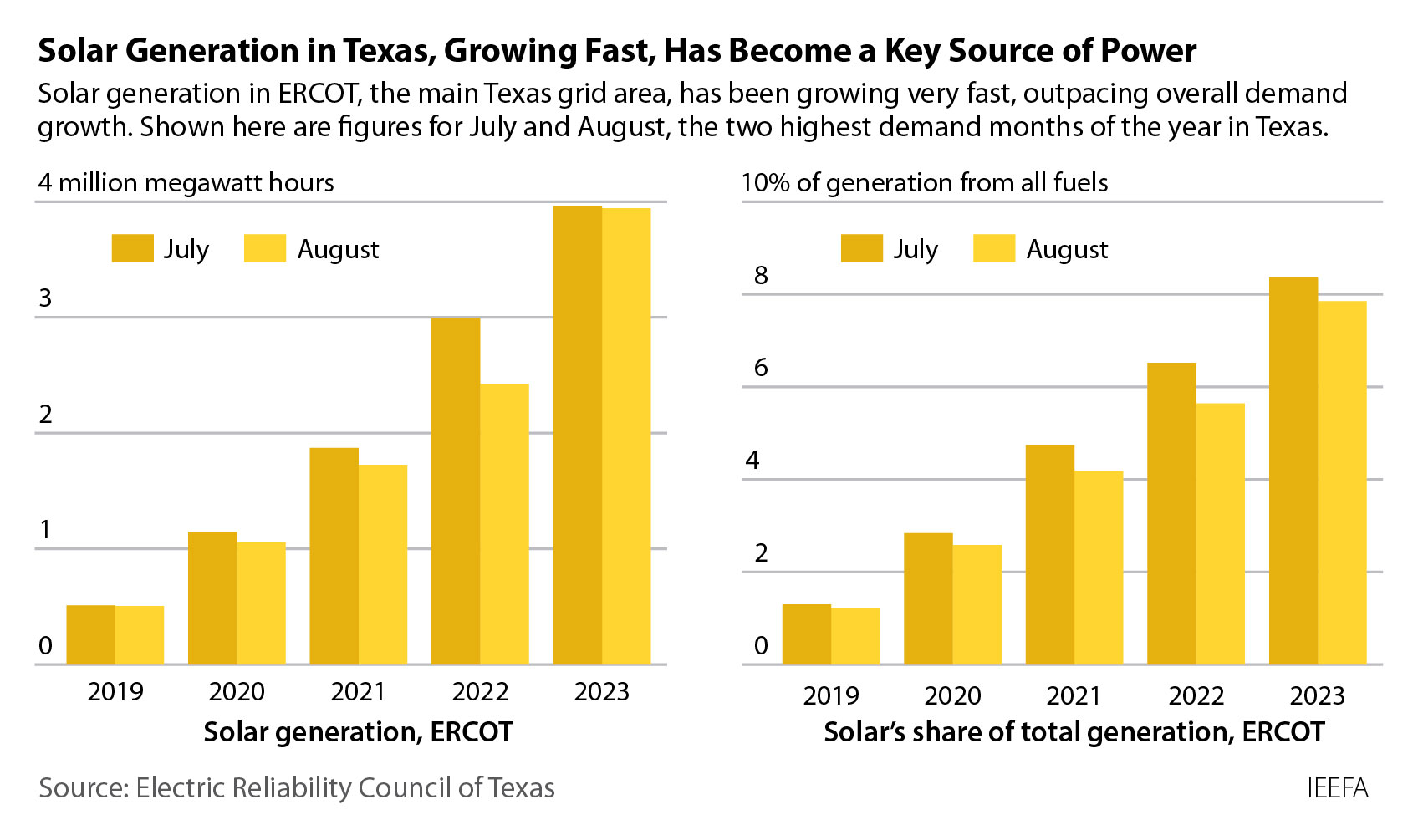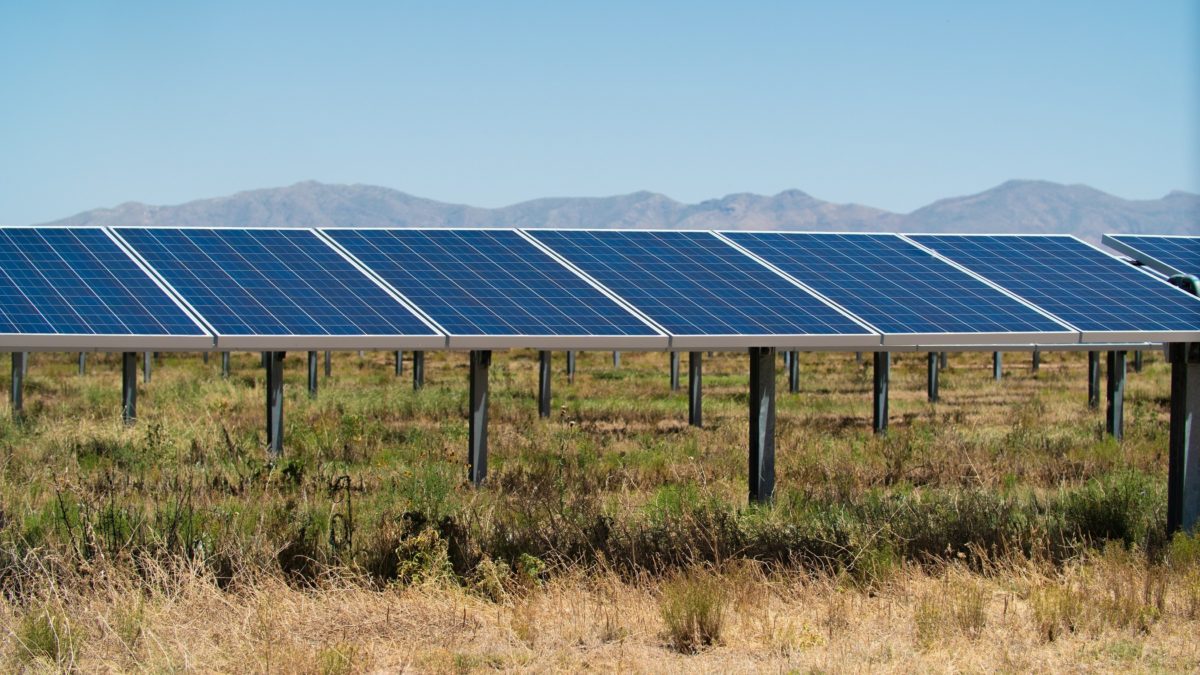Solar energy is often a source of controversy in the discussion of the Texas electric grid, as opponents often argue that it fails to meet the hours of peak electricity demand as an intermittent source of electricity generation. While it is true that more energy storage will be needed to balance a grid increasingly dominated by solar and wind energy, the renewable resources are already providing more critical support than one may expect.
Analysis of Electric Reliability Council of Texas (ERCOT) reports on grid operation data shows that utility-scale solar power reliably provided peak electricity demand throughout the summer, said the Institute for Energy Economics and Financial Analysis (IEEFA).
Peak demand typically lands around 4:00 p.m. to 6:00 p.m. as air conditioning reaches its peak and homeowners return from work. From June 15 through September 15, 2023, ERCOT data shows that solar provided an average of about 14% of peak electricity demand statewide. Peak demand contributions ranged between 10% to 16% throughout the summer, showing a high level of predictability and reliability.

This is impressive when considering that peak demand hours come after peak generation hours for solar as the sun begins to set.
“The figures undercut a key argument used by fossil fuel advocates when talking about renewables—that they are not reliable or predictable,” said IEEFA. “The data proves otherwise. Solar is both reliable and predictable.”
IEEFA highlighted the extraordinary growth of solar in Texas in recent years. A ballooning population and increased electrification has sharply increased demand, and solar has stepped up to serve it. In 2019, utility-scale solar provided just over 500,000 MWh each month in July and August, just over 1% of electricity demand. This year, it delivered more than 3.9 million MWh in each month in July and August, meeting 8% of demand.

“But this overall figure vastly understates solar’s importance, since all solar generation occurs during the higher-demand daylight hours,” said IEEFA.
As solar grows to meet demand, energy storage is following to fully unlock its ability to serve electricity demand and stabilize the market. In 2020, 300 MW of storage was installed statewide. Now, there is over 3.5 GW of storage, and ERCOT’s interconnection queue has another 10 GW lined up. A significant portion of the projects, 7.2 GW, are designed as standalone energy storage projects, while the rest are co-located with solar generation. Batteries played an important role in keeping the lights on in Texas as heat waves passed through, according to local reports.
Significant solar capacity additions are on the way, too. By the end of June 2024, about 7 GW of utility-scale solar is expected to come online, according to ERCOT data.
“Together, these two highly predictable, and reliable, resources are primed to provide the system with low-cost electricity throughout the day, and especially at the peak hour when the grid needs it most,” concluded IEEFA.
This content is protected by copyright and may not be reused. If you want to cooperate with us and would like to reuse some of our content, please contact: editors@pv-magazine.com.









By submitting this form you agree to pv magazine using your data for the purposes of publishing your comment.
Your personal data will only be disclosed or otherwise transmitted to third parties for the purposes of spam filtering or if this is necessary for technical maintenance of the website. Any other transfer to third parties will not take place unless this is justified on the basis of applicable data protection regulations or if pv magazine is legally obliged to do so.
You may revoke this consent at any time with effect for the future, in which case your personal data will be deleted immediately. Otherwise, your data will be deleted if pv magazine has processed your request or the purpose of data storage is fulfilled.
Further information on data privacy can be found in our Data Protection Policy.